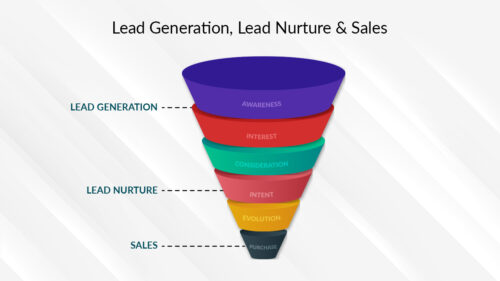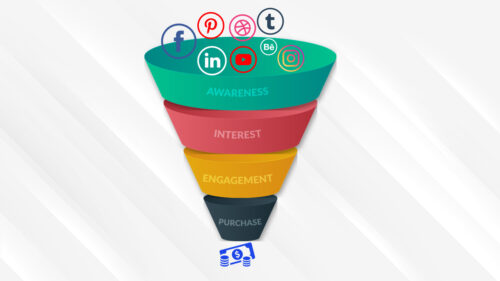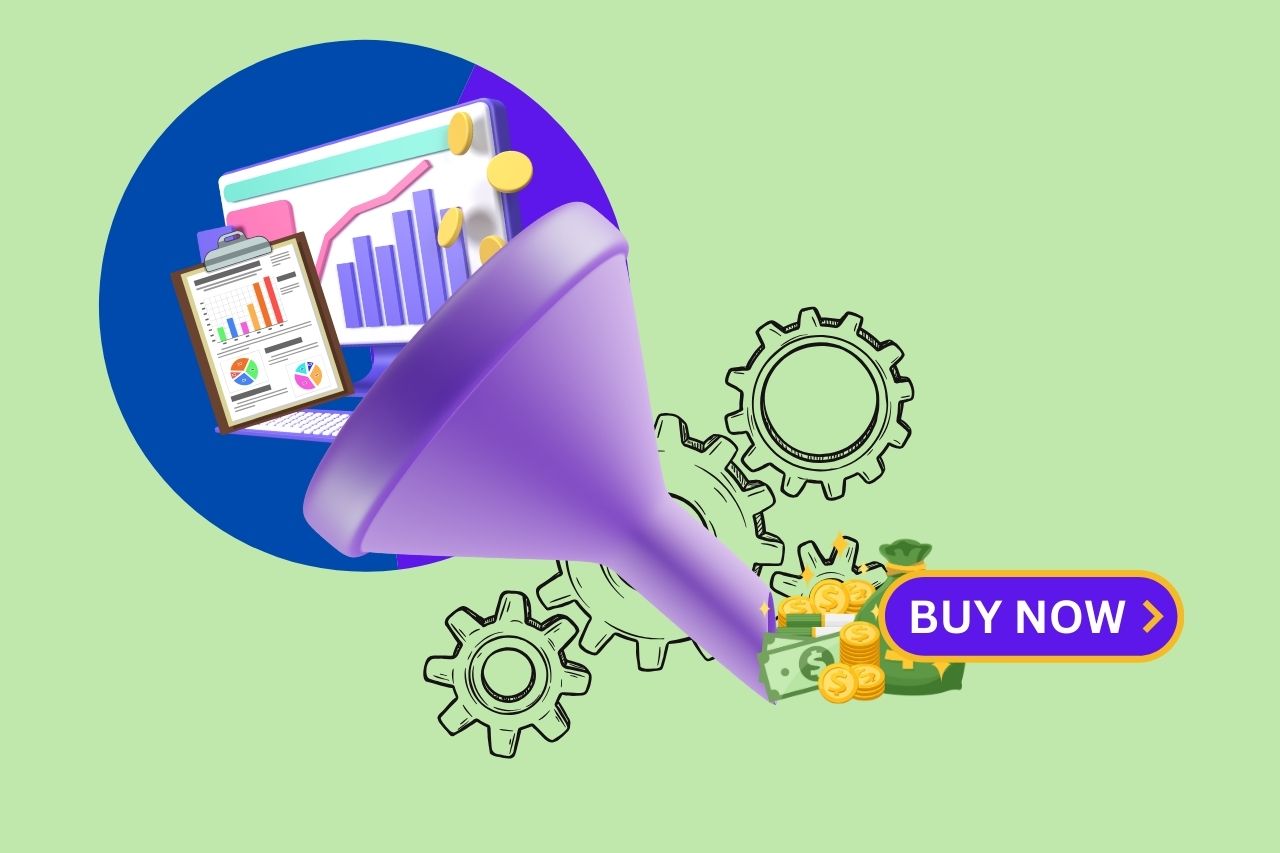We get it. You have arrived at that point in your business where you have understood that developing a funnel instead of a website is THE most crucial modern-age fundamental trick to GROW & BUILD your online course. Having said that, the next question that must come to your mind is the different types of funnels & which funnel I should choose for my online academy. The simple answer is – all funnels are important & the better you optimize them for your business, the higher your landing page will perform.
However, it is not as easy as it looks. But it doesn’t need to be that complicated to understand. That’s why this article will try and simplify everything for you.

The 2 major types of funnels are – a Sales Funnel & a Marketing Funnel. Although closely related, they serve very different yet interrelated purposes. So, what are the differences between sales funnels & marketing funnels?
What is a Marketing Funnel?
A marketing funnel is a high-level strategy that you will build for your business as a visitor’s guide to transcend their entire customer journey from people who absolutely don’t know about your brand towards first interacting with your brand & then finally becoming loyal, paying customers.
Why?
Well-built marketing strategy efforts help your loyal customers get to know your brand by enabling your business to visualize their buying journey from start to end in a systematic & orderly manner.
How?

For this to happen in a streamlined way, a marketing funnel has 3 stages
- Lead Generation
- Lead Nurture
- Sales
The modern-day marketing funnel formula has been derived & evolved from the original AIDA (Awareness, Interest, Desire, Action) formula.
Now, the typical marketing funnel is bifurcated into:
Awareness → Interest → Consideration → Intent → Evaluation → Purchase. See how it works:
- This marketing funnel generally starts with the lead generation stage at the top making the consumer aware of your business about marketing activities.
- The subsequent stage of the funnel is the consideration stage which nurtures the generated awareness in the visitor by making them interested in the product/service offered.
- As they move further down the funnel, techniques such as providing incentives are used to create an intent to take action.
- As the funnel ends at the bottom, the sales funnel stage starts, where the visitor finally makes the purchase and converts from a lead to a potential customer.
WHAT IS A SALES FUNNEL?
The sales funnel, on the other hand, is another process of your visitor’s journey in which you plan to get them to take a very specific intention like BUYING YOUR COURSE, ATTENDING YOUR LIVE WEBINAR, or subscribing to your weekly newsletter.
If you take a look at the diagram above, you will see that the sales process lies at the bottom of the marketing funnel which marks the end of the user’s journey on your page.
Why?
And that is why you need to switch your strategy and move to a sales funnel. A sales funnel is built ONLY for one specific purpose – that you want the visitor to take any action on a particular subject without getting lost in other things on the page.
How?
As the prospect of potential customers reaches the end of the marketing funnel, they are now being aimed at converting into paying customers via standard stages.
A typical sales funnel includes the following stages that direct the visitor to buy/take action:

The differences between the two funnels
Even though both categories of funnels go hand-in-hand and, at times, are used interchangeably – splitting them up is quite hard, there still is a fine line of difference as they serve different purposes:
| Marketing Funnel | Sales Funnel | |
| Focus | Focuses on presenting your brand to multiple audiences & capturing prospective buyers | Focuses on bringing these prospective buyers from the point where they develop an interest in the product or service to the point where they make a sale |
| Outcome | The visitors become prospective customers & start developing an interest in your product/ service offering | The prospective customers buy your product/service offering or make the desired action |
| Funnel | Wider, high-level funnel. Includes the sales funnel | Lies at the bottom, narrow end of the marketing funnel |
BUT Which One Should You Use?
The biggest difference, in the end, however, lies between the nature of the two functions. The marketing funnel should be the go-to source when you have to inform the world about your business & its services/offerings as a whole.
At the same time, the sales funnel should be adapted & combined at every stage of your content marketing funnel so that the prospective customers are driven to the next step and ultimately make a decision without losing focus.
You see, the answer is – combining the sales team with the marketing funnel is the key to making a big positive impact on your business!
Conclusion
Many businesses are going smart now and merging these two very important functions to optimize their maximum utility for their business. You, too, can build your online presence, increase your sales and make the best out of your current service offering by optimizing your funnels.
References:
9 Bestt practices for sales funnels that rapidly grow sales
Monetize your expertise with your own online course. Here’s How








